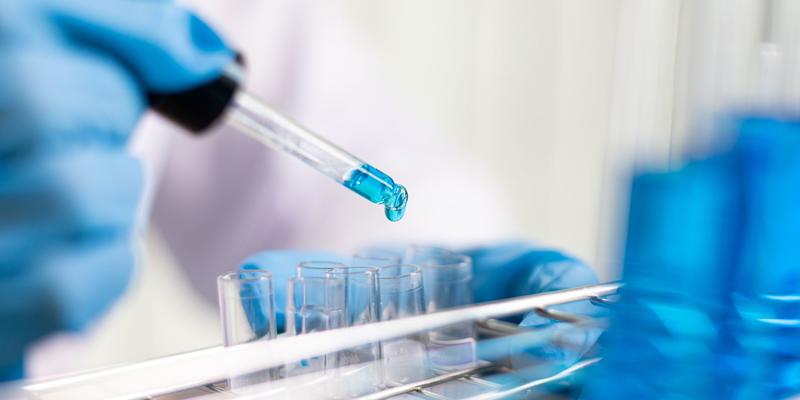Kavli INsD announces first seed-funding awarded to innovative and collaborative interdisciplinary projects proposed by early career researchers
Kavli INsD Announces First Seed-funding Awarded to Innovative and Collaborative Interdisciplinary Projects Proposed by Early Career Researchers
To catalyse synergies between the different physical, engineering and biological sciences, the Kavli Institute for Nanoscience Discovery (Kavli INsD) funds short-term projects for its own researchers to cement interdisciplinary collaborations.

The Kavli Application for Research Development (K.A.R.D) Fund represents our commitment to fostering innovation, interdisciplinary collaboration, and teamwork among our early career researchers.
Launched in September 2023, this fund serves as a crucial steppingstone for researchers by providing seed funding for a proof-of-principle project. Through this K.A.R.D funding we aim to catalyse bold scientific exploration and support the next generation of researchers in their pursuit of cutting-edge discoveries.
We are excited to announce our first K.A.R.D Awards for two projects, each spanning a 12-month period.
Kavli INsD Director Professor Dame Carol Robinson commented: “It was very rewarding to see how the researchers had collaborated across disciplines to present their ideas in coherent proposals”.
The awarded project are:
L1CAM and Beyond: Targeting the Neuronal Extracellular Vesicle Code
by Dr Suman Dutta (Clinical Neurosciences), Dr Corinne Lutomski (Chemistry) and Dr Stelios Chatzimichail (Physics)
Neuron-originating extracellular vesicles (NEVs) show promise as carriers of diagnostic information for neurodegenerative disease such as Parkinson’s and Alzheimer’s, ALS and multiple system atrophy. However the lack of specific surface markers exclusive to central nervous system (CNS) neurons makes it challenging to isolate and characterise nEVs reliably. Although the protein L1CAM has been utilised, and exhibited potential, as a marker for capturing NEVs, its suitability as an EV antigen is still debated. Additionally, L1CAMis found in peripheral nerves, bot just CNS neurons. To address and bridge these gaps in knowledge, this project aims to characterise the L1CAM protein on nEV surfaces and explore novel nEV surface markers. Accurate immune-capture of neuron EVs in the blood could revolutionise the non-invasive detection and stratification of patients for precision therapies and neurological diseases. It could also advance understanding of intercellular communication in the CNS micro environment and open doors for innovative interventions in neuroscience.
The project brings together expertise and techniques spanning the disciplines of Neuroscience, Chemistry and Physics involving mas spectrometry and super resolution microscopy to explore molecular composition and visualise the surface proteins of nEVs at the nanoscale. Furthermore findings will be validated using serum samples from patients with different neurodegenerative diseases.
Characterisation of dopamine neuron and astrocyte extracellular vesicles in Parkinson’s disease
by Dr Hannah Britt (Chemistry) and Akansha Mehta (Physiology, Anatomy and Genetics)
Parkinsons is a brain disorder that affects people predominantly over the age of 65. It is characterised by loss of brain cells called dopamine neurons that produce and release a chemical called dopamine important for muscle coordination and movement. Another brain cell type astrocytes, support these neurons in their survival and proper functioning. These cells communicate with each other with the help of chemical messages contained in vehicles called extracellular vesicles (EVs). Although EVs are key chemical messengers, how they perform this role in the healthy and diseased brain remains unclear. Hannah and Akansha will study Parkinson’s by characterising the chemical messages contained within the EVs released from dopamine neurons and their supporting astrocytes. The method they will use to study the brain cell-derived EVs is native mass spectrometry (nMS). The technique will allow them to capture the chemical components that make up EVs in their most natural form, keeping the distinct properties and interactions which characterise healthy and disease-altered brain function intact. In doing this, they aim to transform understanding of the basis of astrocyte and neuronal communication and where it goes wrong in Parkinson’s.
This project brings together highly specialised techniques and interdisciplinary expertise in studying EVs using nMS, proteomics and lipidomics and an in-depth understanding of the molecular mechanisms of Parkinson’s disease, the development of in-house differentiation protocols of iPSC-derived astrocytes and dopamine neurons, as well as methods to enrich EVs in culture media from these cell types.


